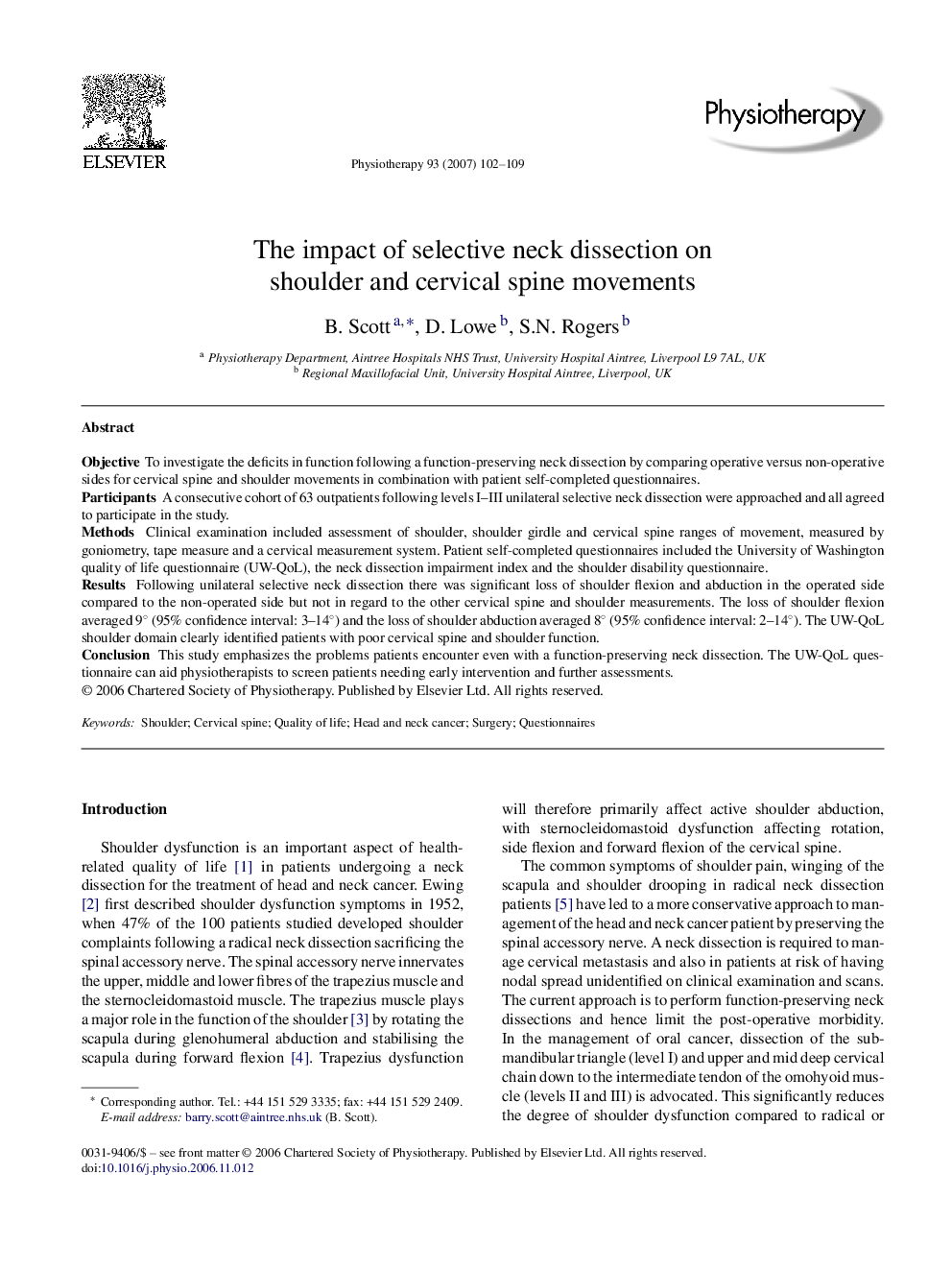| Article ID | Journal | Published Year | Pages | File Type |
|---|---|---|---|---|
| 2627762 | Physiotherapy | 2007 | 8 Pages |
ObjectiveTo investigate the deficits in function following a function-preserving neck dissection by comparing operative versus non-operative sides for cervical spine and shoulder movements in combination with patient self-completed questionnaires.ParticipantsA consecutive cohort of 63 outpatients following levels I–III unilateral selective neck dissection were approached and all agreed to participate in the study.MethodsClinical examination included assessment of shoulder, shoulder girdle and cervical spine ranges of movement, measured by goniometry, tape measure and a cervical measurement system. Patient self-completed questionnaires included the University of Washington quality of life questionnaire (UW-QoL), the neck dissection impairment index and the shoulder disability questionnaire.ResultsFollowing unilateral selective neck dissection there was significant loss of shoulder flexion and abduction in the operated side compared to the non-operated side but not in regard to the other cervical spine and shoulder measurements. The loss of shoulder flexion averaged 9° (95% confidence interval: 3–14°) and the loss of shoulder abduction averaged 8° (95% confidence interval: 2–14°). The UW-QoL shoulder domain clearly identified patients with poor cervical spine and shoulder function.ConclusionThis study emphasizes the problems patients encounter even with a function-preserving neck dissection. The UW-QoL questionnaire can aid physiotherapists to screen patients needing early intervention and further assessments.
